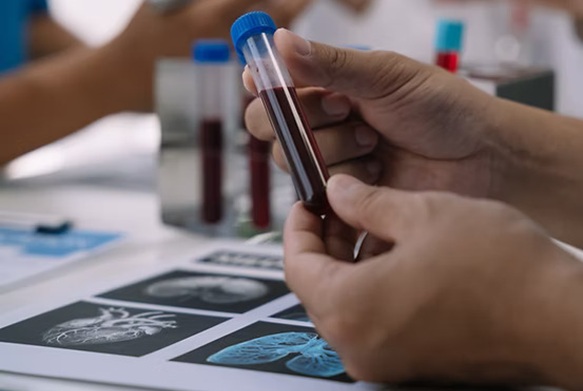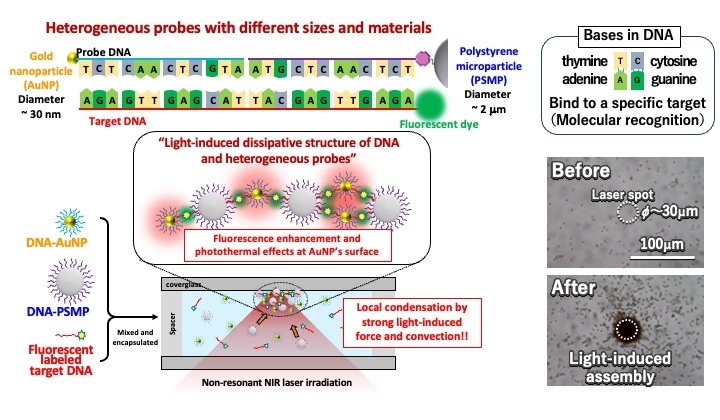Tell Me About It
|
By CLN Stat Posted on 14 Dec 2020 |

Illustration
Special session talk show highlights novel machine learning algorithm that incorporates serial hs-cTn measurements, other inputs to estimate emergency patients’ risk of myocardial infarction.
A talk show at the 2020 AACC Annual Scientific Meeting & Clinical Lab Expo highlights the experiences of two scientists who applied a machine learning algorithm to predict patients’ likelihood of myocardial infarction (MI). Fred Apple, PhD, DABCC, and Yader Sandoval, MD, FACC, FSCAI, will discuss their findings during this special session at 3 p.m. (U.S. Central Standard Time) on December 13.
This algorithm, designated as the myocardial-ischemia-injury-index (MI3), was developed by Abbott Diagnostics under the patent #US2017/0296085 A1, said Apple, medical director of clinical laboratories, clinical chemistry, clinical and forensic toxicology, and point-of-care testing at Hennepin Healthcare in Minneapolis. Investigators would use this in patients with suspected MI to reflect an individual’s likelihood of having a type 1 MI.
Use of data analytics in laboratory medicine is a key area of AACC’s strategic plan. The 2020 Annual Meeting Organizing Committee (AMOC) “felt it would be of interest to have an interactive talk show format presentation on how algorithms can help providers utilize laboratory testing results and improve patient outcomes,” explained AMOC Chair Paul Jannetto, PhD, DABCC, FAACC. Historically, a time gap has existed between AACC University sessions on Sunday and Annual Scientific Meeting opening plenary.
AMOC added this timely interactive session on machine learning and MI for this unique time slot, he added.
Apple, Sandoval—an interventional cardiologist and senior associate consultant at the Mayo Clinic in Rochester, Minnesota—and others have been studying the MI3 algorithm in suspected type 1 MI, type 2 MI, and nonischemic myocardial injury patients presenting at emergency departments. “It incorporates ‘age, sex, and serial high-sensitivity cardiac troponin (hs-cTn) concentrations’ using gradient boosting to compute a value between 0 and 100 to reflect an individual’s likelihood of MI or no MI,” said Apple.
This allows for an individualized and objective assessment to identify low- and high-risk patients to assist in early patient management, he continued.
At this point, interested labs would have to contact Abbott to request use of the algorithm, and only for research purposes, clarified Apple. As far as he and his colleagues are aware, the U.S. Food and Drug Administration has not cleared it for use in patients, nor has it received the Conformitè Europëenne mark. “Investigators are studying MI3 against established early hs-cTn monitoring to determine its independent benefit compared to current early rule-out/rule-in protocols used globally,” noted Apple.
Physicians, pathologists, PhD scientists, laboratory directors, technologists, and in vitro diagnostic industry scientists are encouraged to attend this session. Participants will “come away with an education regarding a new and exciting concept that may provide a new ‘personalized laboratory medicine’ tool to help manage patients with the goal of improving outcomes,” said Apple.
This special session takes place on December 13 from 3–4 p.m. U.S. Central Standard Time and is worth 1 ACCENT credit.
Related Links:
AACC’s Annual Meeting Talk Show Machine Learning and MI
2020 AACC Annual Scientific Meeting & Clinical Lab Expo
A talk show at the 2020 AACC Annual Scientific Meeting & Clinical Lab Expo highlights the experiences of two scientists who applied a machine learning algorithm to predict patients’ likelihood of myocardial infarction (MI). Fred Apple, PhD, DABCC, and Yader Sandoval, MD, FACC, FSCAI, will discuss their findings during this special session at 3 p.m. (U.S. Central Standard Time) on December 13.
This algorithm, designated as the myocardial-ischemia-injury-index (MI3), was developed by Abbott Diagnostics under the patent #US2017/0296085 A1, said Apple, medical director of clinical laboratories, clinical chemistry, clinical and forensic toxicology, and point-of-care testing at Hennepin Healthcare in Minneapolis. Investigators would use this in patients with suspected MI to reflect an individual’s likelihood of having a type 1 MI.
Use of data analytics in laboratory medicine is a key area of AACC’s strategic plan. The 2020 Annual Meeting Organizing Committee (AMOC) “felt it would be of interest to have an interactive talk show format presentation on how algorithms can help providers utilize laboratory testing results and improve patient outcomes,” explained AMOC Chair Paul Jannetto, PhD, DABCC, FAACC. Historically, a time gap has existed between AACC University sessions on Sunday and Annual Scientific Meeting opening plenary.
AMOC added this timely interactive session on machine learning and MI for this unique time slot, he added.
Apple, Sandoval—an interventional cardiologist and senior associate consultant at the Mayo Clinic in Rochester, Minnesota—and others have been studying the MI3 algorithm in suspected type 1 MI, type 2 MI, and nonischemic myocardial injury patients presenting at emergency departments. “It incorporates ‘age, sex, and serial high-sensitivity cardiac troponin (hs-cTn) concentrations’ using gradient boosting to compute a value between 0 and 100 to reflect an individual’s likelihood of MI or no MI,” said Apple.
This allows for an individualized and objective assessment to identify low- and high-risk patients to assist in early patient management, he continued.
At this point, interested labs would have to contact Abbott to request use of the algorithm, and only for research purposes, clarified Apple. As far as he and his colleagues are aware, the U.S. Food and Drug Administration has not cleared it for use in patients, nor has it received the Conformitè Europëenne mark. “Investigators are studying MI3 against established early hs-cTn monitoring to determine its independent benefit compared to current early rule-out/rule-in protocols used globally,” noted Apple.
Physicians, pathologists, PhD scientists, laboratory directors, technologists, and in vitro diagnostic industry scientists are encouraged to attend this session. Participants will “come away with an education regarding a new and exciting concept that may provide a new ‘personalized laboratory medicine’ tool to help manage patients with the goal of improving outcomes,” said Apple.
This special session takes place on December 13 from 3–4 p.m. U.S. Central Standard Time and is worth 1 ACCENT credit.
Related Links:
AACC’s Annual Meeting Talk Show Machine Learning and MI
2020 AACC Annual Scientific Meeting & Clinical Lab Expo
Latest AACC 2020 News
- All Virtual 2020 AACC Uses Artificial Intelligence to Connect Exhibitors and Attendees
- Greiner Bio-One Showcases VACUETTE Virus Stabilization Tube for Transport and Storage of COVID-19 Swab Samples
- Stago Diagnostics Transforms Hemostasis with Innovations at AACC 2020 Virtual Event
- Roche Announces Newest Additions to Cobas Family of Analyzers at AACC 2020 Virtual Event
- Seegene Highlights High-Throughput, Single Tube 8-Plex RT-PCR Test for Flu A, Flu B, RSV and COVID-19 with Dual Internal Controls
- Mindray Showcases Total Automated, Scalable Laboratory Solutions for Improving Workflow, Efficiency and Standardization of High Volume Labs
- Beckman Coulter Displays Multidisciplinary Instruments Organized by Size and Workflow Needs in State-of-the-Art 3D Showrooms
- GenScript Demonstrates High-Throughput Measurement of Neutralization Antibody Titers in Serum Samples from SARS-CoV-2 Infected Patients
- Abbott Showcases Next-Generation Alinity Family of Systems at AACC 2020 Virtual Event
- Siemens Demonstrates Groundbreaking, New Innovations in Imaging, Diagnostics and Therapy at AACC 2020 Virtual Event
- Management Skills for Early Career Professionals
- Regulatory Readiness: Tips for Surviving Surveys and Staying in Compliance
- The New and the Next in Brain Health Biomarkers
- The COVID-19 Pandemic: Primed and Prepared
- Content Across the Gamut
Channels
Clinical Chemistry
view channel
‘Brilliantly Luminous’ Nanoscale Chemical Tool to Improve Disease Detection
Thousands of commercially available glowing molecules known as fluorophores are commonly used in medical imaging, disease detection, biomarker tagging, and chemical analysis. They are also integral in... Read more
Low-Cost Portable Screening Test to Transform Kidney Disease Detection
Millions of individuals suffer from kidney disease, which often remains undiagnosed until it has reached a critical stage. This silent epidemic not only diminishes the quality of life for those affected... Read more
New Method Uses Pulsed Infrared Light to Find Cancer's 'Fingerprints' In Blood Plasma
Cancer diagnoses have traditionally relied on invasive or time-consuming procedures like tissue biopsies. Now, new research published in ACS Central Science introduces a method that utilizes pulsed infrared... Read moreMolecular Diagnostics
view channel
Blood Test Could Predict Relapse of Autoimmune Blood Vessel Disease
Neutrophils, once believed to be uniform in nature, have been discovered to exhibit significant diversity. These immune cells, which play a crucial role in fighting infections, are also implicated in autoimmune... Read more
First-of-its-Kind Blood Test Detects Trauma-Related Diseases
In today’s fast-paced world, stress and trauma have unfortunately become common experiences for many individuals. Continuous exposure to stress hormones can confuse the immune system, causing it to misinterpret... Read moreHematology
view channel
New Scoring System Predicts Risk of Developing Cancer from Common Blood Disorder
Clonal cytopenia of undetermined significance (CCUS) is a blood disorder commonly found in older adults, characterized by mutations in blood cells and a low blood count, but without any obvious cause or... Read more
Non-Invasive Prenatal Test for Fetal RhD Status Demonstrates 100% Accuracy
In the United States, approximately 15% of pregnant individuals are RhD-negative. However, in about 40% of these cases, the fetus is also RhD-negative, making the administration of RhoGAM unnecessary.... Read moreImmunology
view channel
Stem Cell Test Predicts Treatment Outcome for Patients with Platinum-Resistant Ovarian Cancer
Epithelial ovarian cancer frequently responds to chemotherapy initially, but eventually, the tumor develops resistance to the therapy, leading to regrowth. This resistance is partially due to the activation... Read more
Machine Learning-Enabled Blood Test Predicts Immunotherapy Response in Lymphoma Patients
Chimeric antigen receptor (CAR) T-cell therapy has emerged as one of the most promising recent developments in the treatment of blood cancers. However, over half of non-Hodgkin lymphoma (NHL) patients... Read moreMicrobiology
view channel
Handheld Device Delivers Low-Cost TB Results in Less Than One Hour
Tuberculosis (TB) remains the deadliest infectious disease globally, affecting an estimated 10 million people annually. In 2021, about 4.2 million TB cases went undiagnosed or unreported, mainly due to... Read more
New AI-Based Method Improves Diagnosis of Drug-Resistant Infections
Drug-resistant infections, particularly those caused by deadly bacteria like tuberculosis and staphylococcus, are rapidly emerging as a global health emergency. These infections are more difficult to treat,... Read more
Breakthrough Diagnostic Technology Identifies Bacterial Infections with Almost 100% Accuracy within Three Hours
Rapid and precise identification of pathogenic microbes in patient samples is essential for the effective treatment of acute infectious diseases, such as sepsis. The fluorescence in situ hybridization... Read morePathology
view channel
Sensitive and Specific DUB Enzyme Assay Kits Require Minimal Setup Without Substrate Preparation
Ubiquitination and deubiquitination are two important physiological processes in the ubiquitin-proteasome system, responsible for protein degradation in cells. Deubiquitinating (DUB) enzymes contain around... Read more
World’s First AI Model for Thyroid Cancer Diagnosis Achieves Over 90% Accuracy
Thyroid cancer is one of the most common cancers worldwide, and its precise management typically relies on two primary systems: (1) the 8th edition of the American Joint Committee on Cancer (AJCC) or ... Read more
Breakthrough Diagnostic Approach to Significantly Improve TB Detection
Tuberculosis (TB) remains the deadliest infectious disease globally, with 10.8 million new cases and 1.25 million deaths reported in 2023. Early detection through effective screening is crucial in identifying... Read more
Rapid, Ultra-Sensitive, PCR-Free Detection Method Makes Genetic Analysis More Accessible
Genetic testing has been an important method for detecting infectious diseases, diagnosing early-stage cancer, ensuring food safety, and analyzing environmental DNA. For a long time, polymerase chain reaction... Read moreTechnology
view channel
Disposable Microchip Technology Could Selectively Detect HIV in Whole Blood Samples
As of the end of 2023, approximately 40 million people globally were living with HIV, and around 630,000 individuals died from AIDS-related illnesses that same year. Despite a substantial decline in deaths... Read more
Pain-On-A-Chip Microfluidic Device Determines Types of Chronic Pain from Blood Samples
Chronic pain is a widespread condition that remains difficult to manage, and existing clinical methods for its treatment rely largely on self-reporting, which can be subjective and especially problematic... Read more
Innovative, Label-Free Ratiometric Fluorosensor Enables More Sensitive Viral RNA Detection
Viruses present a major global health risk, as demonstrated by recent pandemics, making early detection and identification essential for preventing new outbreaks. While traditional detection methods are... Read moreIndustry
view channel
Cepheid and Oxford Nanopore Technologies Partner on Advancing Automated Sequencing-Based Solutions
Cepheid (Sunnyvale, CA, USA), a leading molecular diagnostics company, and Oxford Nanopore Technologies (Oxford, UK), the company behind a new generation of sequencing-based molecular analysis technologies,... Read more
Grifols and Tecan’s IBL Collaborate on Advanced Biomarker Panels
Grifols (Barcelona, Spain), one of the world’s leading producers of plasma-derived medicines and innovative diagnostic solutions, is expanding its offer in clinical diagnostics through a strategic partnership... Read more






















